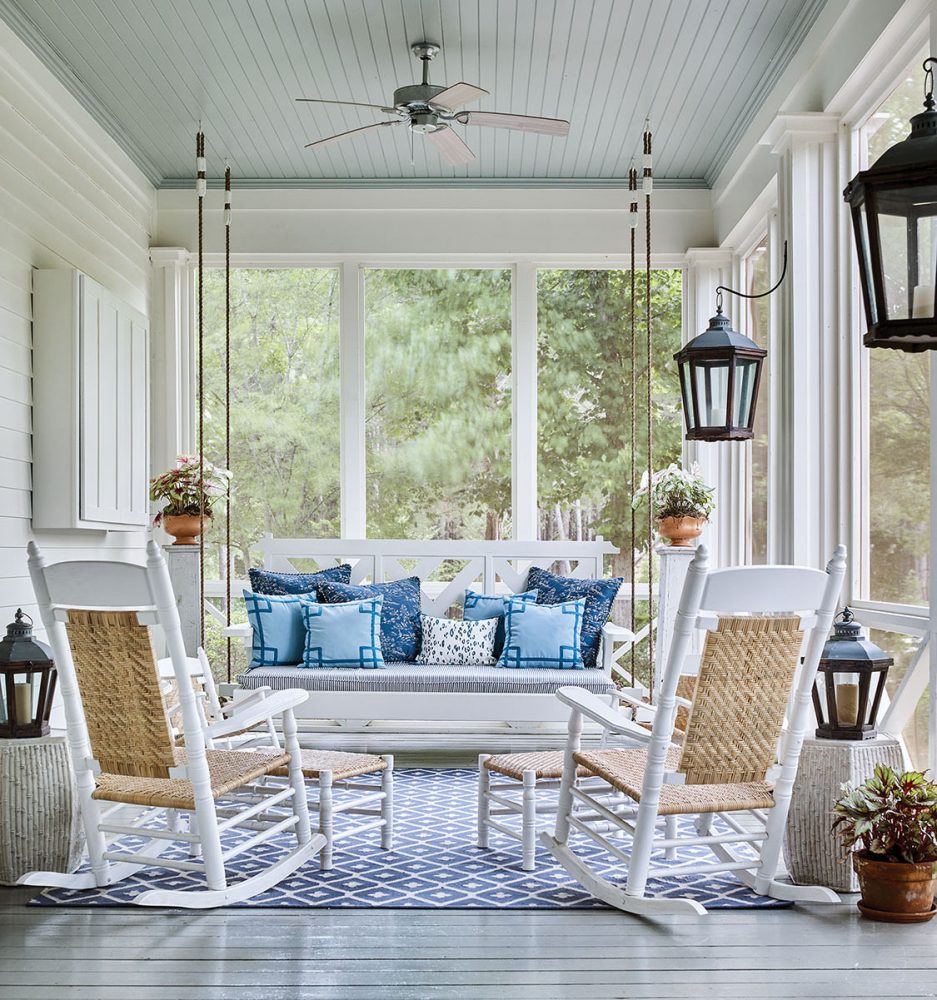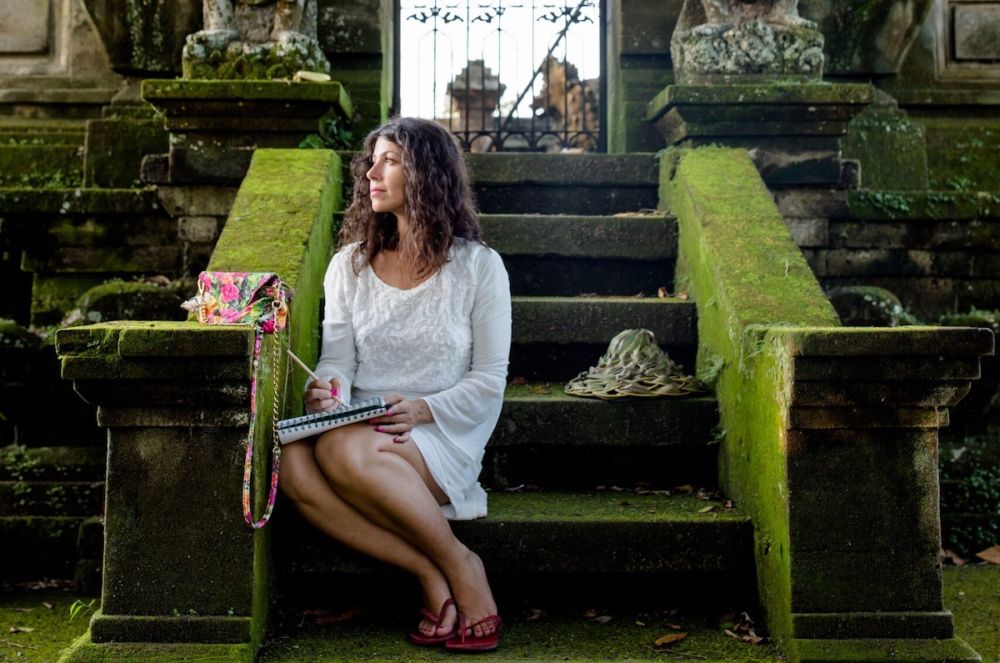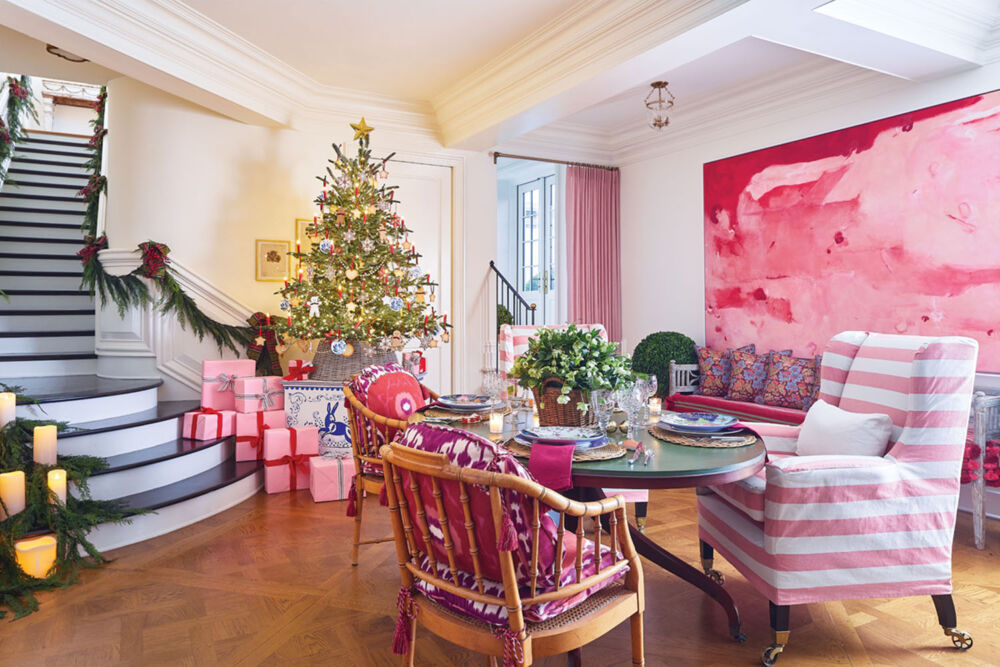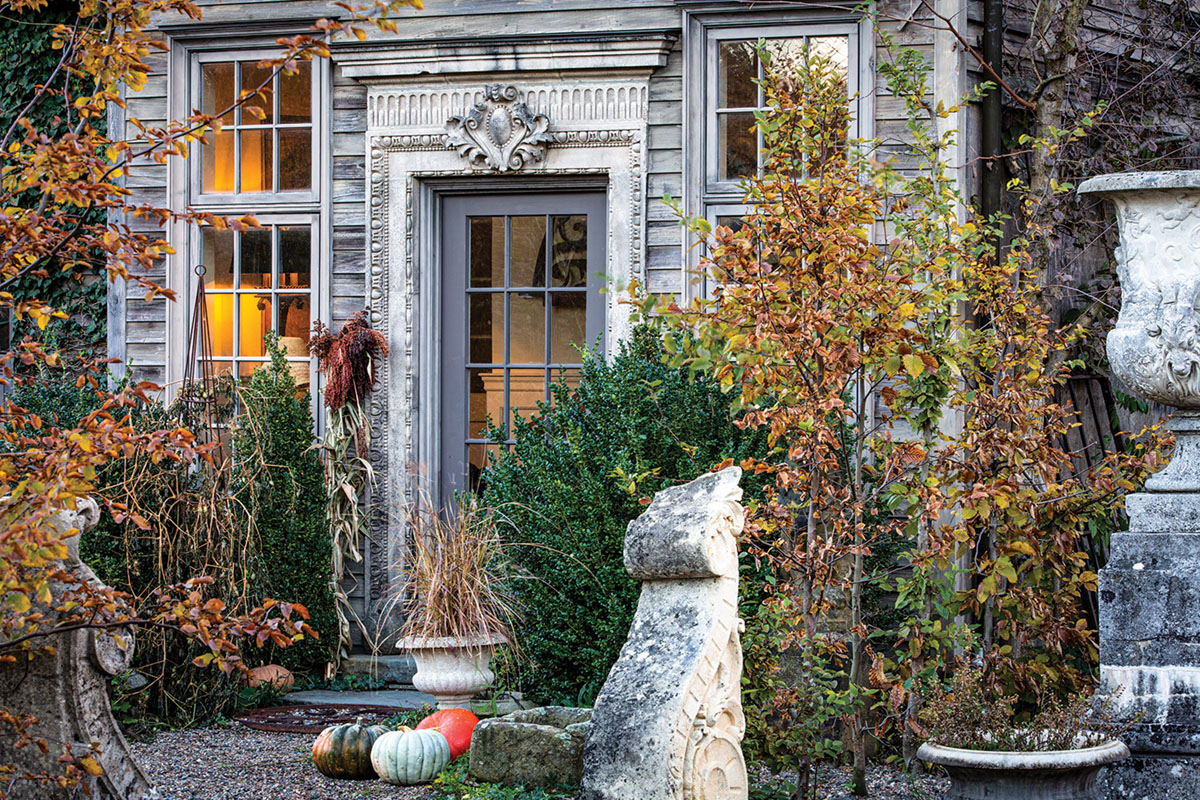
A door surround that once graced a New York City bank adds ambience at the entrance of Jardin de Buis. Muted exterior colors blend with lightly shaped boxwood and Carpinus betulus ‘Fastigiata.’
It was autumn 1994 when she first saw the abandoned barn brimming with old auto parts that eventually became Jardin de Buis. At the time, she was just looking for an affordable rural New Jersey property, knowing that she could salvage even the saddest structure. And the scene, including its six hardscrabble acres, was pitiful. Somehow, Andrea saw promise.
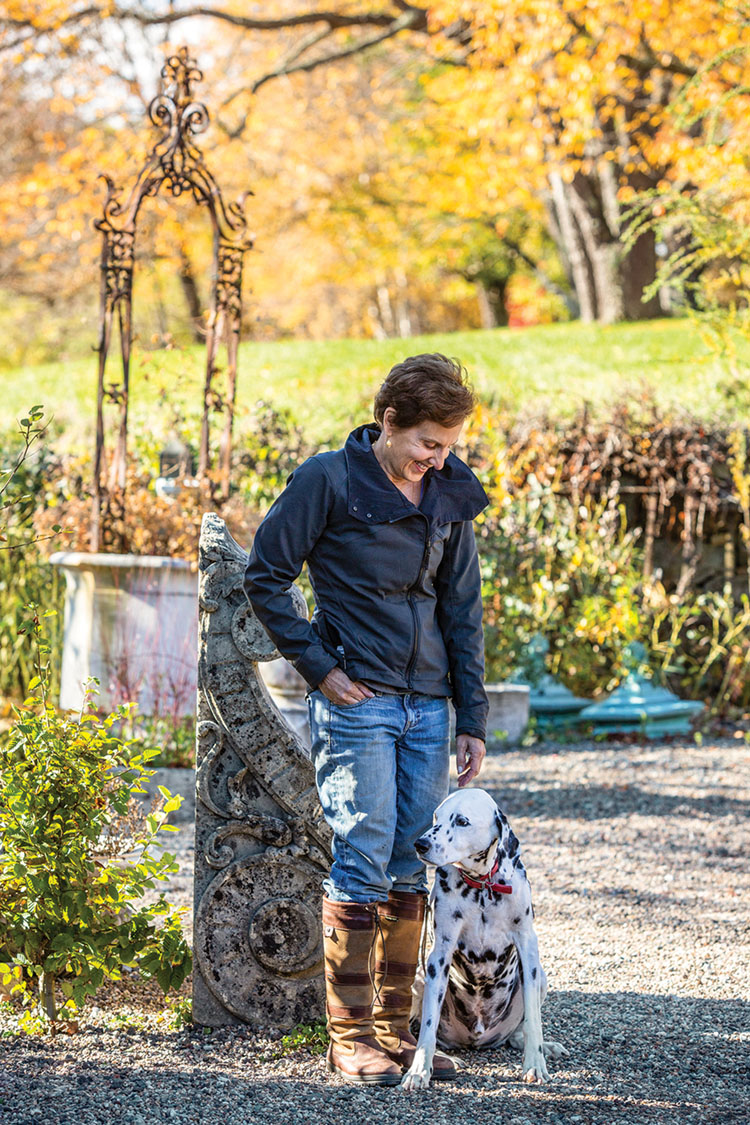
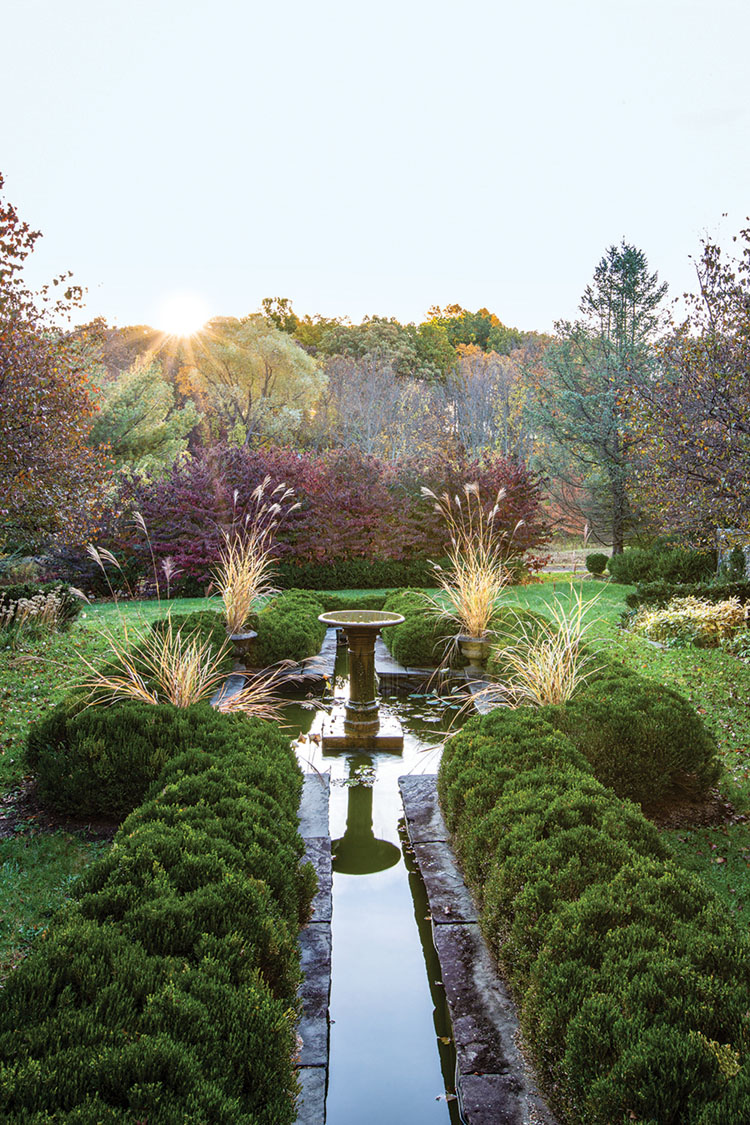
Meanwhile, as Andrea was continuing her professional endeavors, she was learning that the landscape is critical to the mood she strives to create. In fact, she came to realize that shaping a lifestyle means bringing every aspect of a property into the dialogue. Not only did she bring that knowledge home, but she flipped her professional career to landscape design with the launch of F2 Environmental Design. Simultaneously, she was amassing the ingredients that resonate with her aesthetic.
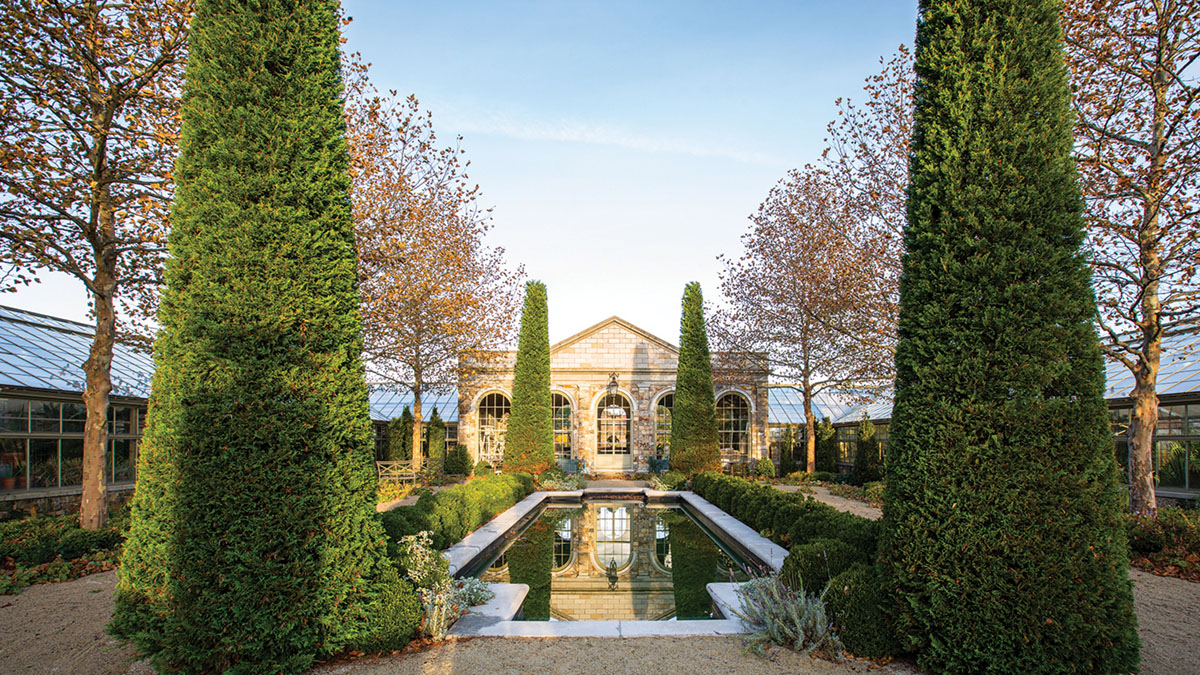
Leyland cypress columns frame the orangerie.
“What I’m striving for here is not something you can generate immediately. It starts with a feeling. And then, over time, all the elements have to be absorbed into the landscape. Everything evolves in a site, and you have to evolve with it.” — Andrea Filippone
“I knew that lanterns, an old door, and the right hardware could immediately transform an interior,” she explains. “So how do you achieve that in the landscape? You find the right elements to furnish garden rooms.”
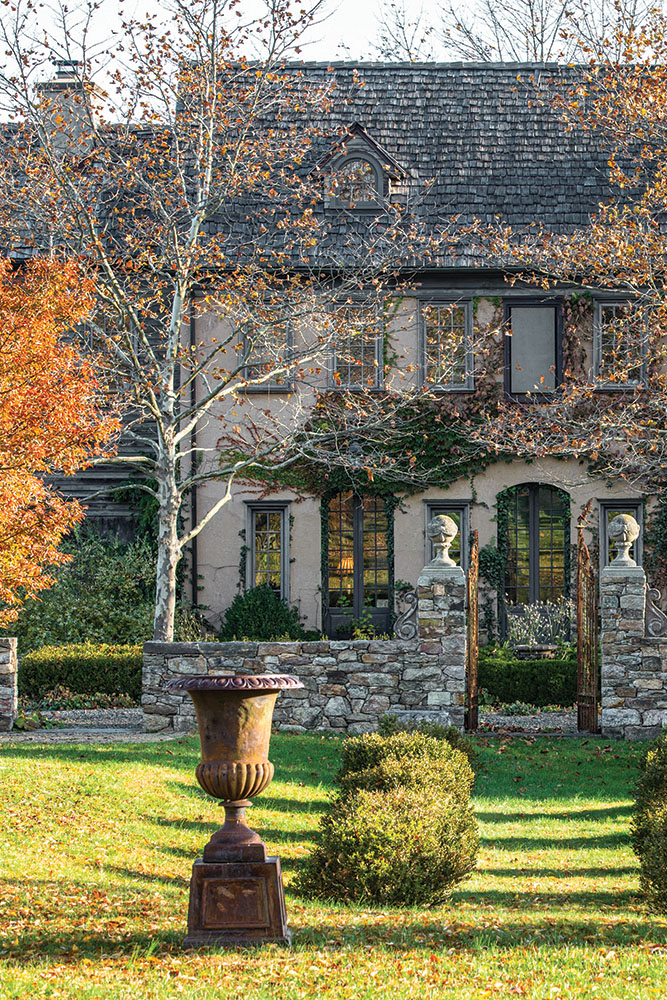
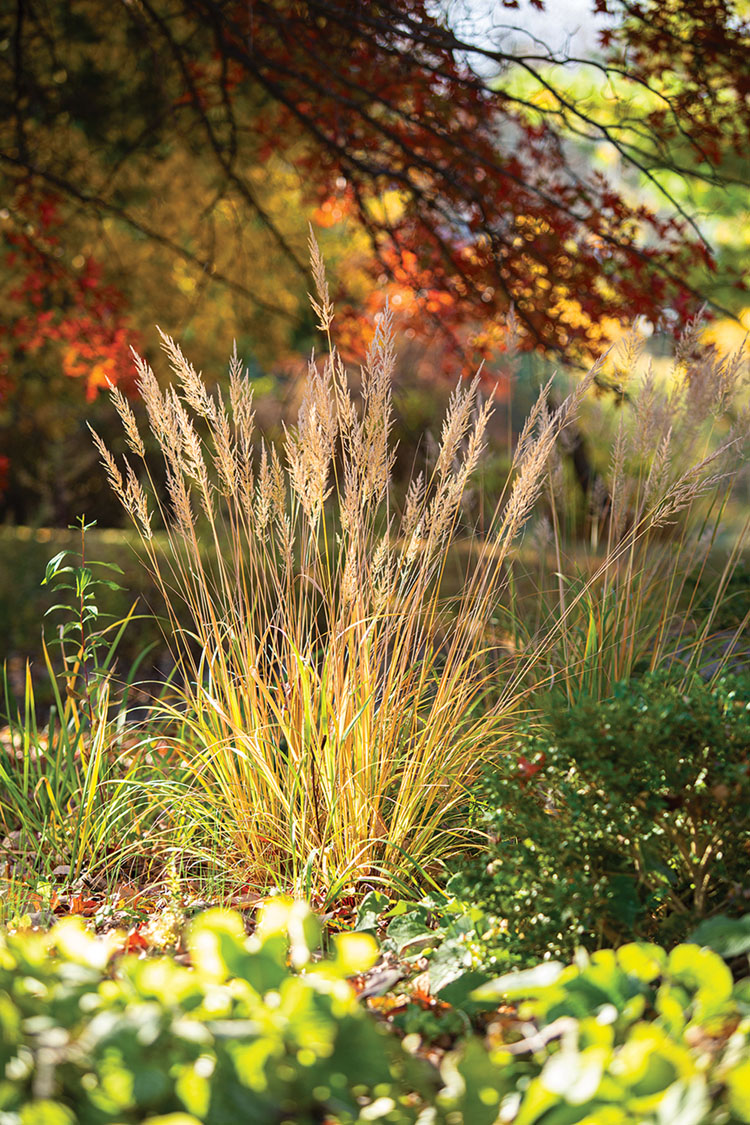
Once you enter Andrea’s world, the whole scene plays into an epic journey unlike any other experience. Additional acreage has increased the property to a total of 26, with stone steps and gravel paths leading from antiques-strewn terraces to enclosed gardens. Further structures are now layered beyond the original barn complex. Most notably, Andrea adopted orphan greenhouses and created a dramatic presentation horseshoeing around a central orangerie with a pool garden and a potager as part of the footprint. Muted paint colors, weathered corbels tucked into a corner, and unfilled urns—it all feels wonderfully unstudied. “I want complete immersion,” she says.
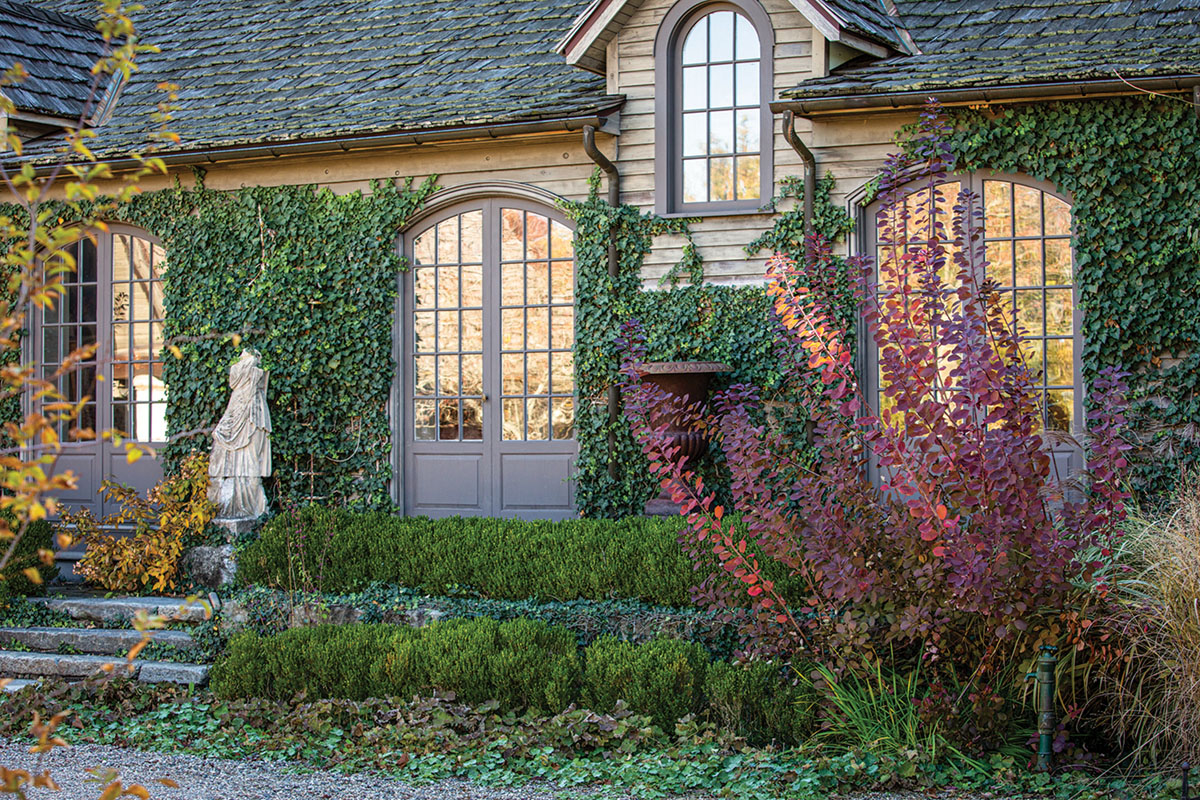
English ivy eases the link between the old and new sections of the house.
With stewardship being at the heart of Jardin de Buis, purely practical conditions spoke loudly in the design process as well. The enclosed spaces were created to shield the house in its windy location, and now they are essential to the design dialogue. “I resisted the urge to reveal everything all at once—which creates a sense of mystery,” says Andrea.
Wandering from room to dramatic room makes you feel deeply ensconced in her retrospective world. Practical roots also anchor the plant selection. In a region heavily affected by browsing deer, Andrea needed shrubs that are impervious to those nibbling creatures—a situation that led her to a romance with boxwoods, which she studied, collected, and propagated to make favorite cultivars more readily available.
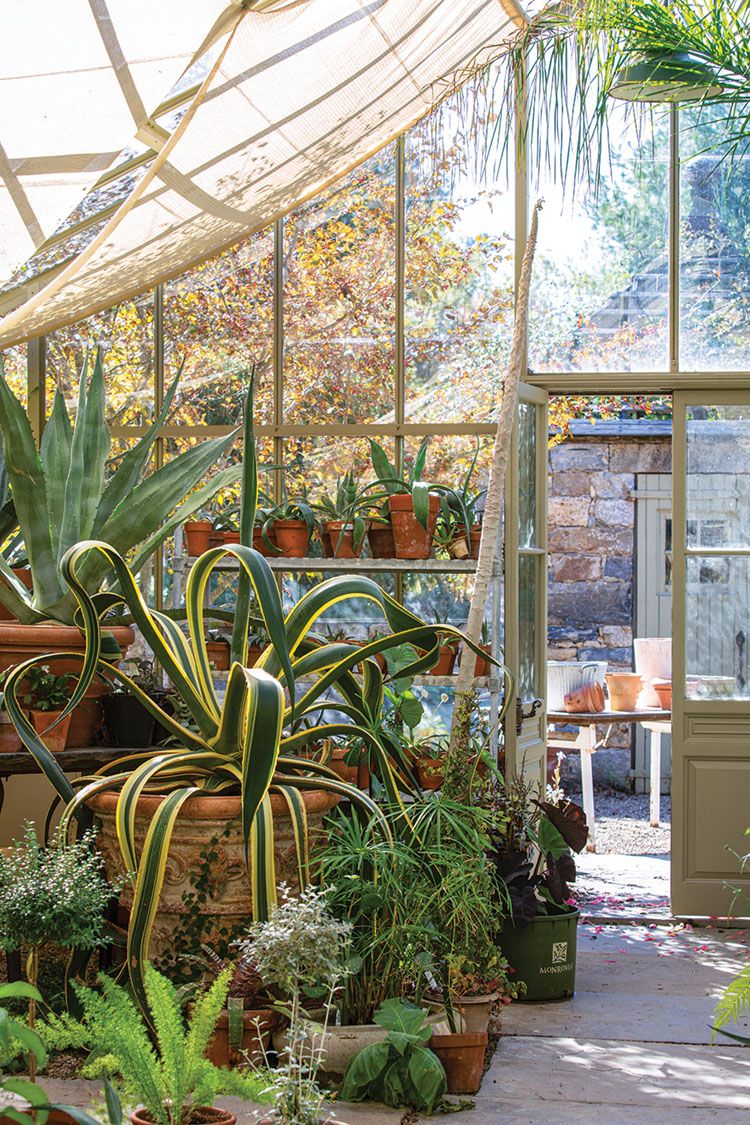
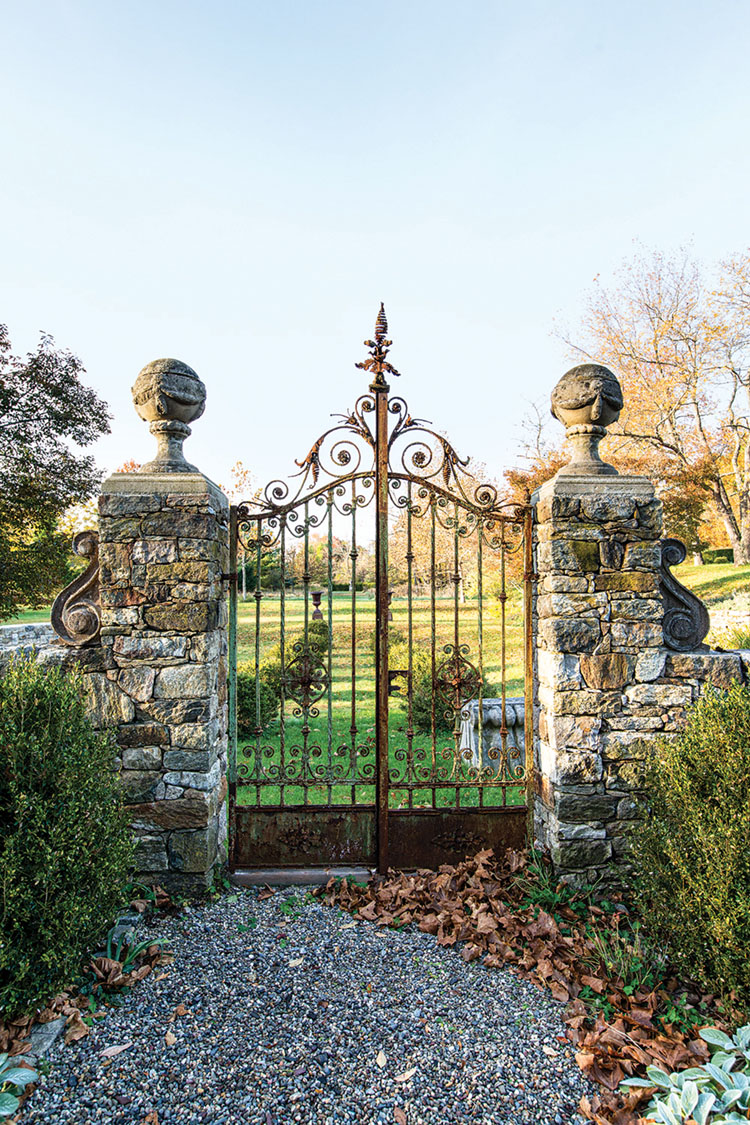
“We do not create beauty in a vacuum,” Andrea explains. “It’s all part of the whole picture. This is an evolution. I want it to be dramatic, but it took time to be absorbed and assimilated into my land. Everything here is about feelings expressed through nature.”
Jardin de Buis is where the realities of nature and the imagery of fantasy intersect.
ANDREA’S TIPS FOR LATE-SEASON LAYERS
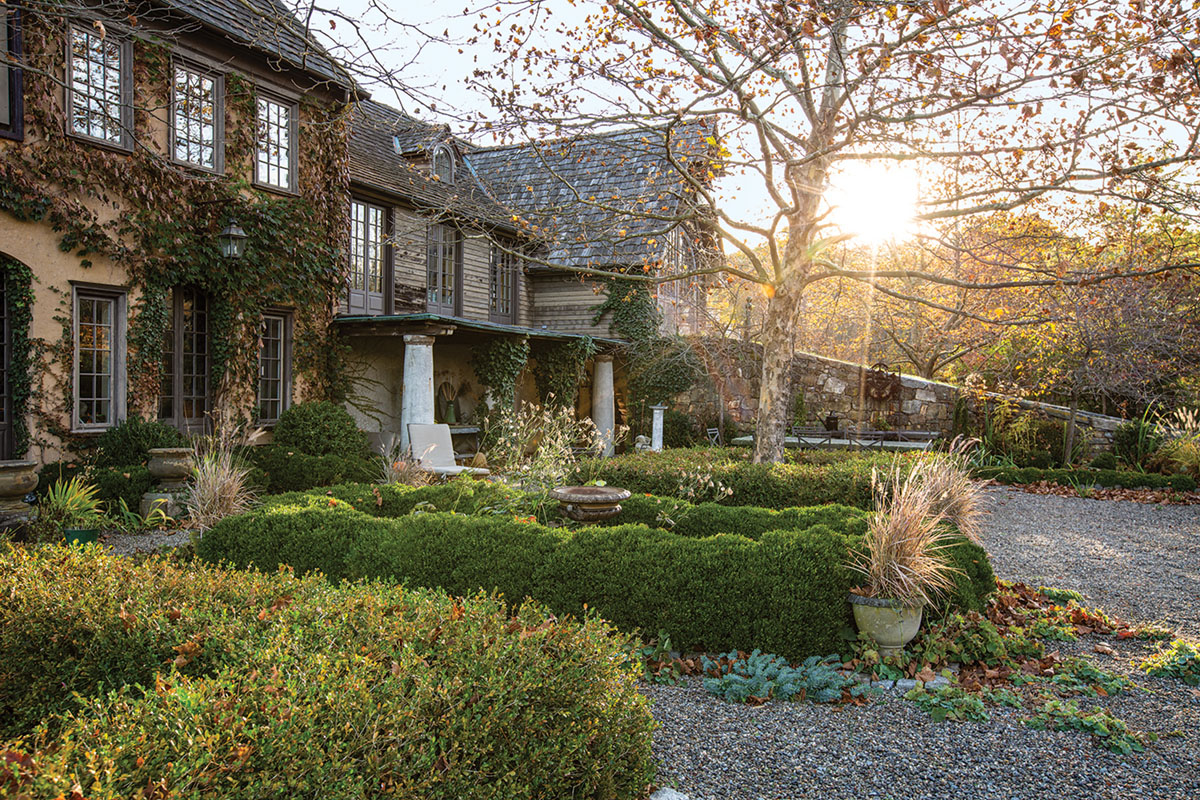
Buxus sempervirens ‘Justin Brouwers’ forms loose edging in the courtyard behind the kitchen.
Buxus sempervirens ‘Justin Brouwers’ forms loose edging in the courtyard behind the kitchen.
Purposeful Plantings: In the same way that the paint colors are earthy to bring the house and its surroundings together, the plants are carefully selected. There are no garish, colorful pops. Instead, Andrea works with the sun-bleached plumes of ornamental grasses and the stark lines of agaves against foliage backdrops that often feature the wonderful auburn shades of autumn.
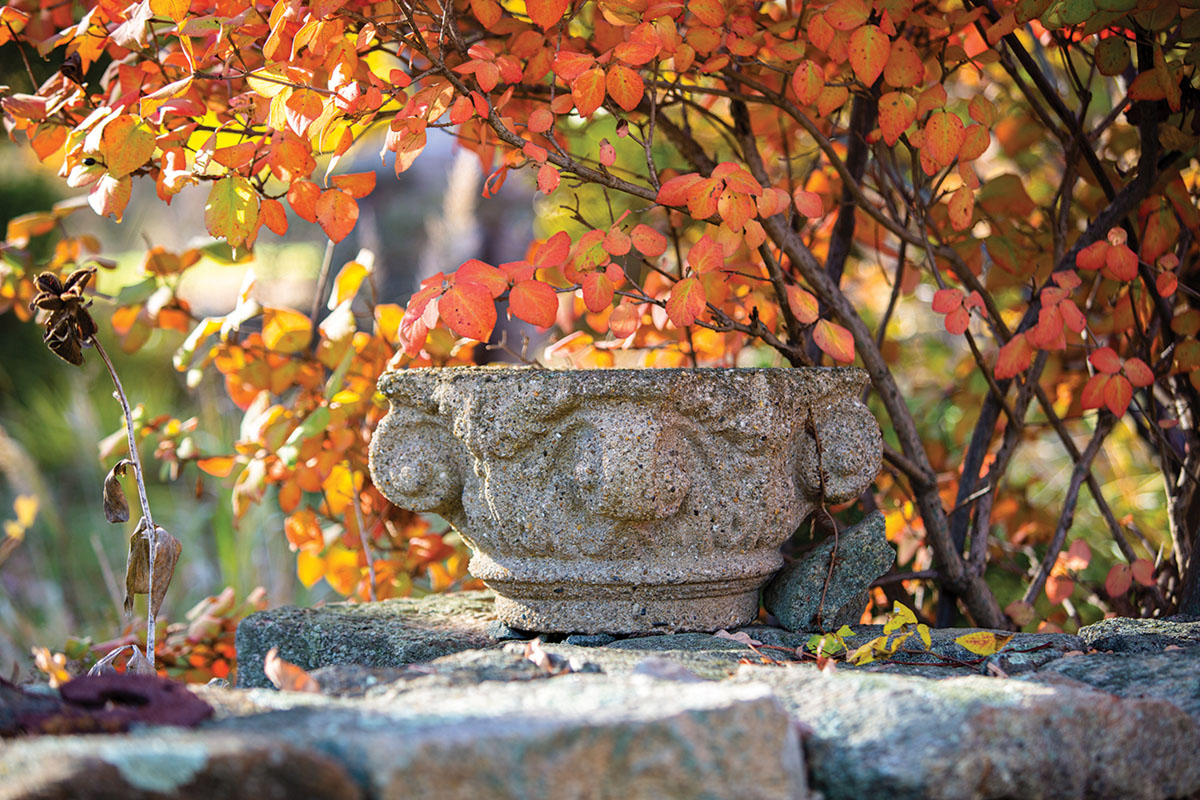
Viburnum carlesii in autumn color
Beneath It All: Andrea always emphasizes that it’s not only about what is visually apparent; Jardin de Buis goes beyond that. The rubric begins below ground, and she sees the soil as the most critical layer.
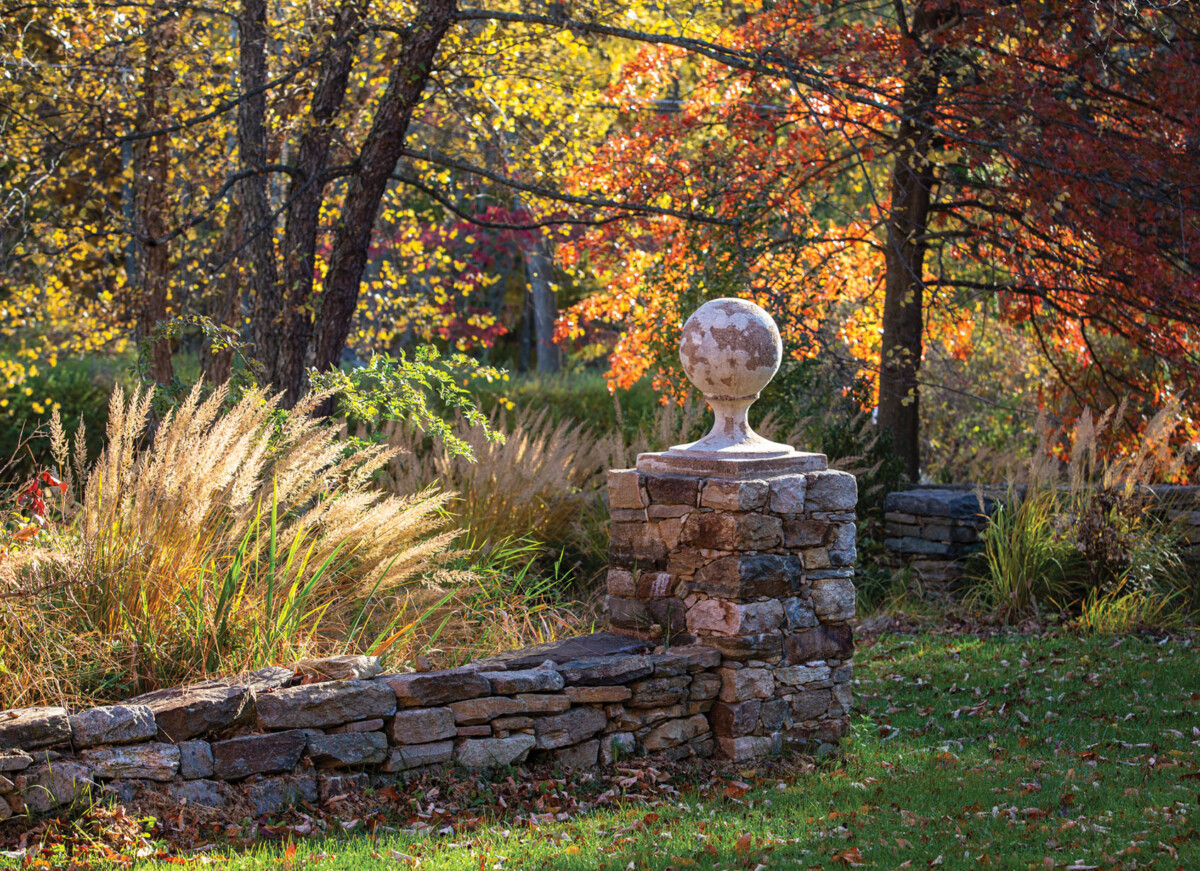
By Tovah Martin | Photography by Claire Takacs | Landscape design by F2 Environmental Design, f2environmentaldesign.com


